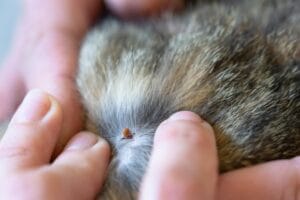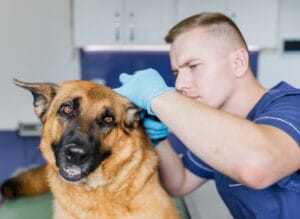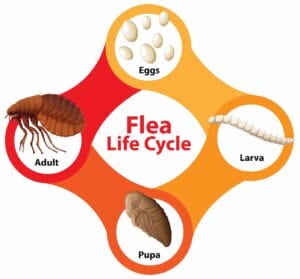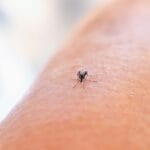When our pets can’t stop scratching, it’s not just a little irritating—it could be the start of a major flea problem. These little critters are more than just a bother; they can lead to big health issues for pets and big headaches for pet owners. But don’t worry, there are successful ways to stop and fight these itchy intruders.
Key Takeaways
- Consistent flea prevention is vital to keeping your pets and home flea-free.
- Recognize flea infestations early by looking for scratching, bites, and flea dirt.
- Immediate treatment with the appropriate products can stop fleas dead in their tracks.
- Comprehensive cleaning of your home is necessary to eliminate fleas and their eggs.
- Consulting a veterinarian is advised for severe infestations or if your pet has a reaction to flea treatments.
Flea Infestations and Your Pet’s Health

Most importantly, fleas aren’t just a nuisance for pets; they can transmit diseases and cause allergic reactions. That’s why taking steps to prevent fleas from making your pet their host is so crucial for their health and well-being.
Getting to Know the Danger to Our Furry Friends
Keeping fleas away isn’t just about stopping the scratch; it’s about protecting the well-being of your pet. Fleas have the ability to pass on tapeworms and cause anemia, particularly in the case of small or young pets. They can also set off dermatitis, which can result in a lot of scratching, loss of hair, and infections.
Understanding Fleas: From Egg to Adult
Before you can stop fleas from infesting your pets, you need to know what you’re dealing with. Fleas go through a complicated lifecycle that starts as an egg and progresses to a larva, then a pupa, and finally a biting adult. This lifecycle can take a few weeks or several months, depending on the conditions. The key to stopping fleas is to break this cycle.
Recognizing Flea Symptoms

The first step in preventing a flea infestation is knowing what to look for. If your pet is scratching or licking more than usual, they might have fleas. Fleas are tiny and dark, so you might be able to see them moving in your pet’s fur.
Scratching and Bugs You Can See
When your pet can’t stop scratching, it’s time to investigate. Push aside their fur and look for fleas or small black dots—flea dirt, which is really flea poop. This is a sure sign of an infestation.
What is Flea Dirt?
Flea dirt appears as tiny black specks on your pet’s skin, similar to ground pepper. If you’re uncertain whether it’s flea dirt or just regular dirt, put it on a moist paper towel. If it turns red, it’s flea dirt because it has blood that the fleas have digested.
What to Do When You Spot Fleas

As soon as you notice your pet has fleas, you need to take action. The longer you delay, the more fleas will breed. Begin by giving your pet a flea treatment that your vet has recommended.
“The secret to halting a flea invasion is to respond promptly and use the appropriate products. Don’t wait until you’re spotting fleas all over the place—by that point, it’s already escalated into a major issue.”
Choosing the Best Flea Remedy
There are many flea remedies to choose from, including spot-on treatments, tablets, and flea collars. Choose a product that is suitable for your pet’s breed, weight, and health status. Always follow the directions closely to ensure it works and is safe.
How to Apply Flea Treatments Correctly
Even the best flea treatment won’t work if it’s not applied properly. For topical treatments, make sure to apply it directly to your pet’s skin, usually at the base of the neck or along the back, where your pet can’t lick it off. If you’re using an oral medication, make sure your pet swallows the pill completely. You might need to hide it in their food.
Keeping Your Home Flea-Free

Next, we need to address the fleas in your home. Your home can be a paradise for fleas and, if not handled properly, it can become a flea nursery. That’s why it’s so important to treat your home at the same time as your pet for a thorough approach to flea management.
Begin with giving all of your pet’s bedding, blankets, and favorite lounging spots a good wash in hot water. This will eliminate any fleas or eggs that may be hiding out. Next, get out the vacuum and give your carpets, rugs, furniture, and pet areas a thorough cleaning. Be sure to dispose of the vacuum bag or empty the canister outside so no fleas have a chance to sneak back into your home.
When dealing with a major infestation, you may have to use flea bombs or even hire a professional pest control company. But, be careful when using these methods, especially if you have pets or children. Always read and follow the safety instructions or ask a professional for advice.
How to Clean Your Home to Get Rid of Fleas
Cleaning is a crucial part of fighting a flea infestation. Here’s a handy list to help you take on those annoying fleas and ensure the link between cleanliness and pest prevention is maintained in your home.
- Every day, give your carpets, upholstered furniture, and pet’s favorite spots a thorough vacuuming.
- Steam cleaning your carpets and furniture can help kill off any flea eggs or larvae that may be hiding.
- Make sure to wash all of your pet’s bedding and any soft furnishings they use on a regular basis.
- Use a flea spray that’s designed for use in homes. Pay special attention to baseboards, cracks, and crevices.
Keeping Fleas Out
Of course, the best way to deal with fleas is to prevent them from infesting your home in the first place:
- Apply flea-prevention treatments to your pets all year long.
- Keep your yard clean and tidy to eliminate potential flea hiding spots.
- Think about using nematodes in your garden, which are natural predators of fleas.
- Keep a consistent cleaning routine to prevent flea lifecycles from establishing.
Keeping a Flea-Free Environment

After you’ve handled an infestation, the next step is to keep your environment free of fleas. Regularly check your pets for fleas, particularly during the warmer months when fleas are most active. For more information on maintaining a clean environment and preventing pests, read about the link between cleanliness and pest prevention.
Don’t let your hard work go to waste. Keep up with the flea prevention treatments for your pets and keep your home clean. A little bit of effort can prevent fleas from returning.
Keeping Fleas Away All Year Long
It’s important to remember that fleas can live inside your home even in the winter, so you need to use flea prevention products all year long. This can be a spot-on treatment, an oral medication, or a flea collar. Don’t just use them in the summer!
Watching Your Pet’s Surroundings
Pay attention to where your pet hangs out, both in and outside of the house. Regular grooming can help you catch fleas early, and keeping your pet’s surroundings clean can help prevent a flea infestation.
Picking the Perfect Flea Prevention Solution

With so many flea prevention solutions available, it can be hard to know which one is the best for your pet. You’ll want to take into account your pet’s habits, any health problems they may have, and your own personal preferences when choosing a solution. Here’s a guide to help you make your choice:
| Product Type | Application | Duration of Effectiveness |
|---|---|---|
| Topical Treatments | Applied to the skin | Usually 1 month |
| Oral Medications | Given by mouth | Varies, some last 1 month, others up to 3 months |
| Flea Collars | Worn around the neck | Can last several months |
Various Flea Control Products
Topical treatments, oral medications, and flea collars are the most common types of flea control products. Topicals are applied to the pet’s skin and spread through their natural skin oils, while oral medications are ingested and work from the inside out. Flea collars release flea-repelling substances around your pet but may not be as effective in areas away from the neck.
Keep in mind, every product has its benefits and drawbacks, and what’s effective for one pet might not be for another. It’s all about discovering the ideal solution for your pet’s requirements and your way of life.
Time to See the Vet
If you find yourself in the midst of a serious flea invasion or if your pet isn’t responding well to flea treatments, it’s time to get your vet involved. They can offer expert guidance and may even recommend more potent flea control solutions or medications to help your pet.
“If you’re having a hard time getting rid of fleas, don’t be afraid to ask for help. Your vet can give you the advice and support you need.”
When we have pets, their safety and comfort are one of our main concerns. Fleas are a prevalent issue that can affect our pet’s health, so it’s crucial to know about the different flea control products out there. Each product has a different mode of action, and picking the correct one can be the key to keeping your pets content and free from itching.
Various Flea Prevention Products
The most prevalent types of flea prevention are topical treatments, oral medications, and flea collars. Topicals are liquids that are applied to the skin, typically between the shoulder blades, and they work for about a month. Oral medications are chewables or pills that protect against fleas for up to three months. Flea collars can provide protection for a few months by releasing active ingredients over your pet’s skin and coat.
Keep in mind that some flea control products also offer protection against ticks and other parasites. When choosing a product, take into account the specific needs of your pet and your lifestyle. For instance, if your pet often swims or bathes, a waterproof option such as certain topical treatments or oral medications may be the best fit.
When to Seek Advice from Your Vet
If you don’t know which flea treatment is best for your pet, or if your pet has had bad reactions to flea treatments in the past, you should ask your vet. They can give you advice based on your pet’s health and lifestyle. Also, if your pet already has fleas or if you can’t get rid of fleas in your home, you might need to get professional help.
Moreover, if your pet shows any negative responses to flea treatments, like skin redness, throwing up, or tiredness, get in touch with your vet right away. They can guide you through the situation securely and might recommend different treatments.
Common Questions

Here are some frequently asked questions from pet owners about how to prevent and treat fleas:
How frequently should I apply flea treatments to my pet?
- Topical treatments are usually applied once per month.
- Oral medications can vary, with some lasting a month and others up to three months.
- Flea collars typically last several months, but always refer to the product’s label for a specific timeframe.
No matter what type of treatment you choose, it’s crucial to follow the manufacturer’s directions and maintain a consistent protection schedule to avoid flea infestations.
Do fleas pose other health risks to pets?
Indeed, fleas can lead to a variety of health complications in pets, such as:
- Flea allergy dermatitis, a serious allergic reaction to flea bites.
- Anemia, especially in young or small pets with heavy infestations.
- Transmission of tapeworms, which occurs when a pet accidentally swallows a flea while grooming.
Consistent flea prevention is essential to protect your pet from these health hazards.
Can all pets use flea treatments?
While most flea treatments are safe when used properly, certain pets may be allergic to some ingredients. Puppies, kittens, older pets, pregnant or nursing pets, and those with pre-existing health conditions may require special attention. Always consult with your vet before beginning a new flea treatment plan.
Are indoor pets susceptible to fleas?
Indeed, even pets that stay indoors can be affected by fleas. These annoying creatures can sneak into your home on clothing or other pets. Once they’ve found a way in, they can reproduce rapidly and infest your home. This is why it’s important for even indoor pets to be on a flea prevention plan.
What if my pet has a reaction to flea treatment?
If your pet seems to be having a reaction to a flea treatment, such as showing signs of skin redness, itching, or seeming unwell, stop using the product and wash your pet with mild soap and water. Contact your vet immediately for advice. They may recommend a different treatment and can provide care for any reactions your pet may be experiencing.
In the end, keeping fleas at bay is a crucial part of making sure your pet stays healthy and happy. By being proactive, picking the right products, and keeping your home tidy, you can make sure fleas don’t have a chance. Keep in mind, if you’re ever unsure or if an infestation gets too big, your vet is the best person to help get things back to normal.





